BLM Mural: Capturing A Crucial Moment In Bed-Stuy History
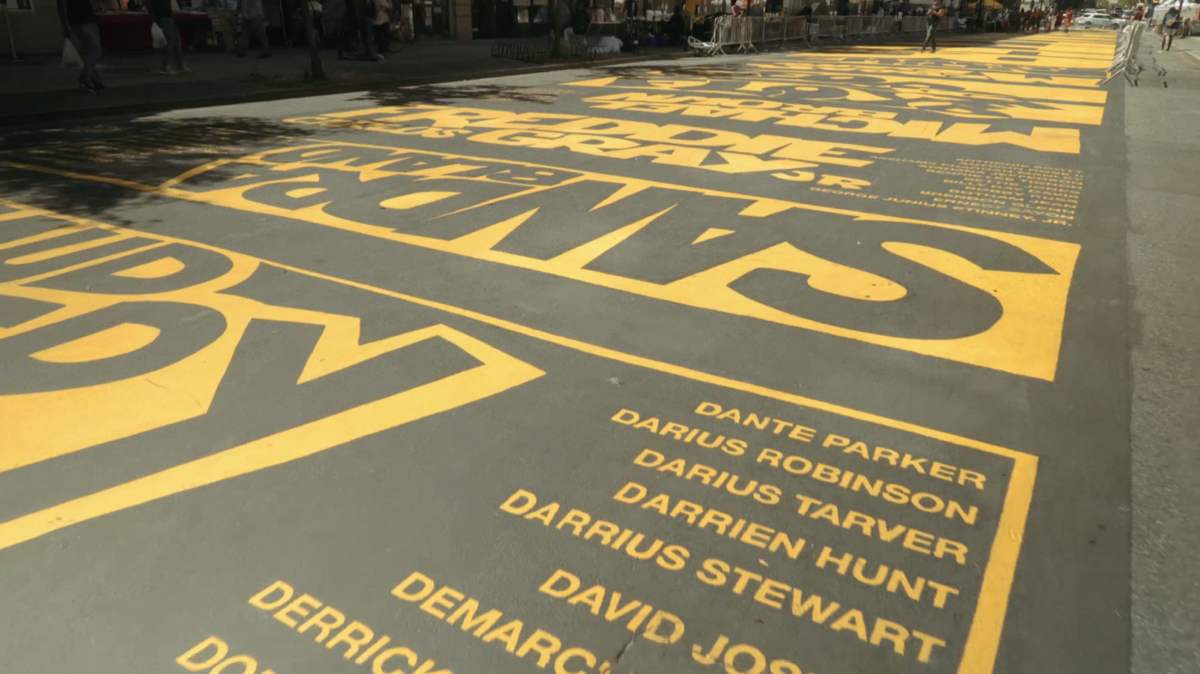
Last June, right after the paint had dried on the giant new D.C. mural sporting the words ‘Black Lives Matter’ on the two blocks leading up to the White House, Bed-Stuy’s Monique Antoine watched from afar as the space sat idle, blocked off from traffic but otherwise completely unused. Even more egregious, she felt, was the fact that the mural in front of Brooklyn Borough Hall, completed in late June, became immediately reclaimed by traffic once it was complete.
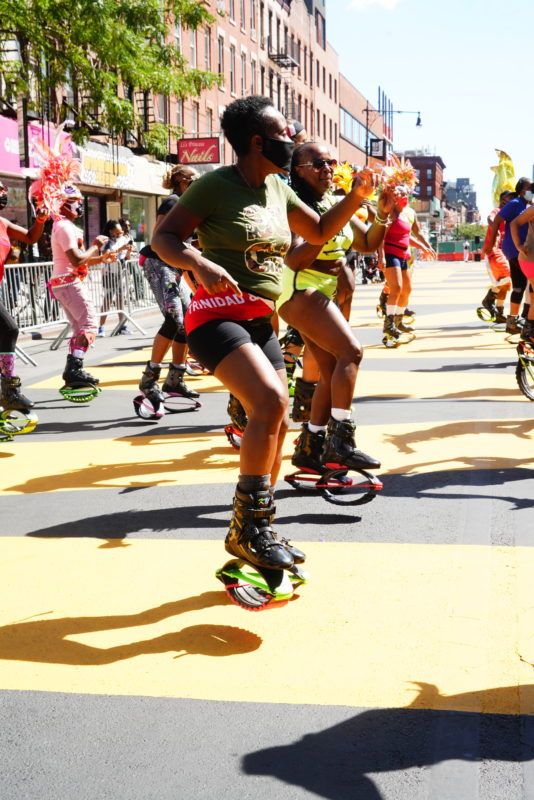
“As soon as they painted it, they drove cars over it,” Antoine said. “The question becomes, ‘what about Black lives actually matters here?’ What was the point – was this a photo op? Because now I feel like it was a photo op.”
Antoine, a schoolteacher as well as a member of Bed-Stuy’s Community Board 3, worried that the same thing would happen to the new BLM mural outside Restoration Plaza on Fulton Street. That mural, a joint effort between Council Member Robert Cornegy and the Billie Holiday Theatre at Restoration Plaza, painted by artist Dawud West, also included many of the names of Black victims of police violence, including George Floyd, Sandra Bland, and Tamir Rice. It sprang up practically overnight, Antoine said, giving her barely any time to organize.
In late July, thanks to her efforts, blocked off from traffic, the area transformed into a stage for dance groups and marching bands, a market for local vendors, and a place for Bed-Stuy’s residents to freely engage with one another in the open air. It offered kids’ sports demos, as well as services and activities for seniors. It became, Antoine told Bklyner, something much more than she could have imagined.
Even for Dawud, the mural seemed to resonate much more with people than he ever expected. He was given a week to work on it, and by the end, “people had grown, I would say, closer to the mural,” he said. “I guess it meant something — as opposed to just a piece of art.” The news of it traveled, he said; even his parents, both of whom live in the South, caught wind of the project without his mentioning it.
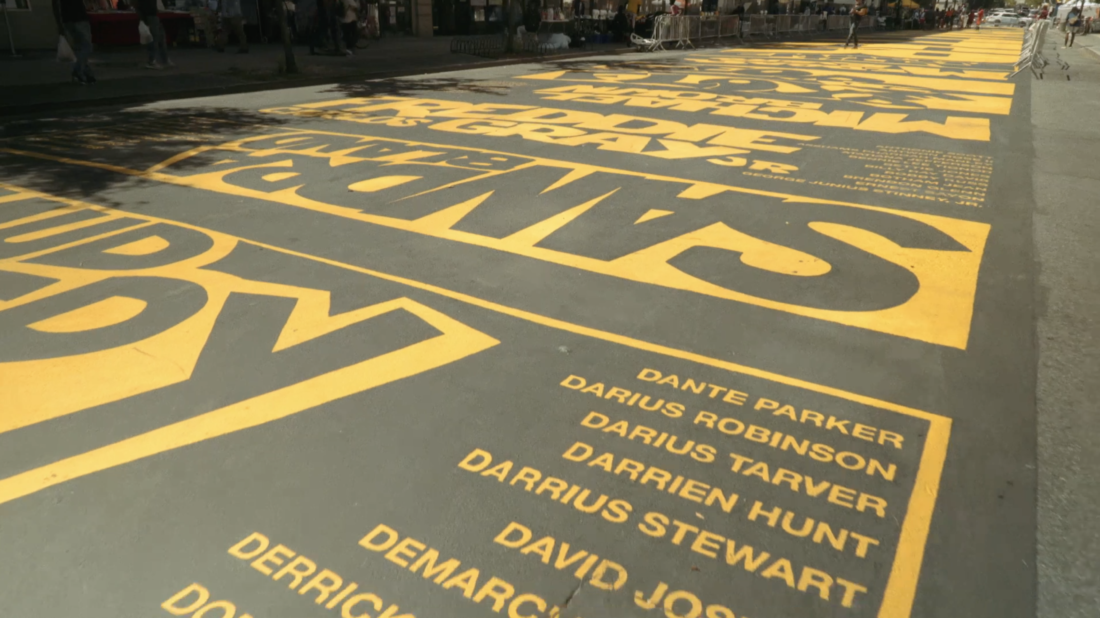
Dawud attributes that resonance in part to the inclusion of victims’ names, something the D.C. mural did not do.
“I think that was the added piece that kind of made it really personal for a lot of people,” he said.
While the space closed down for activities in October, the four-month period that it remained open is now permanently memorialized; in a four-minute documentary titled ‘This Is What Community Looks Like,’ released last week by Brooklyn-based content agency Mustache, those months are now condensed into a montage of interviews with local organizers like Antoine, vibrant snapshots of community life, and a glimpse of the mural’s creation process. The message that rings throughout the film is clear: this is just one way for Bed-Stuy residents to reclaim their space.
“Our public spaces – the sidewalks, our parks – have to be reclaimed,” said Brittany Micek, Bed-Stuy resident and founder of the grassroots organization, Meditating for Black Lives, in the film. “We hear these chants, like ‘Whose streets? Our Streets.’ Well then, really make them our streets! This is how we take back our spaces.”
In many parts of Bed-Stuy, Antoine told Bklyner, open space is scarce, now even more so due to the pandemic.
“We don’t have any open space anyway,” she said. “[The city] closed the schools, [the city] closed the parks – what’s left for communities that are disenfranchised? We need spaces so that we can breathe, we can run. We have high numbers of obesity, diabetes…how are we supposed to get this exercise, how are we supposed to do these things, if we have no space?”
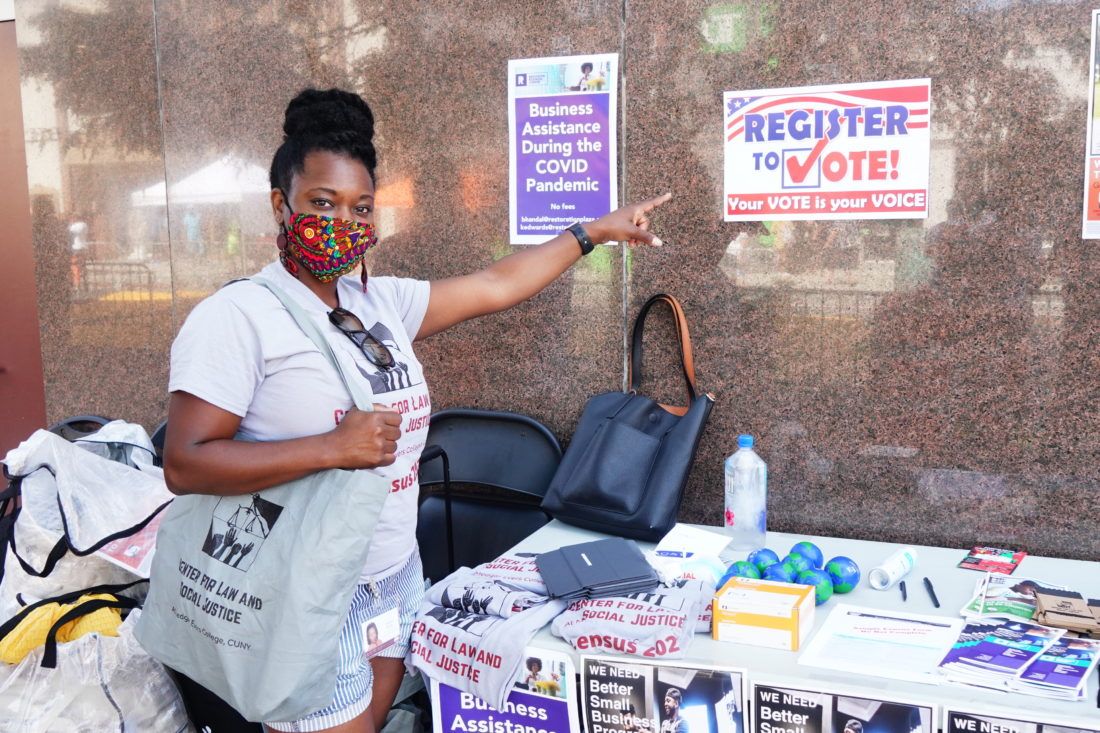
A statistic that pops up on screen during the film states that, of the 18 community districts in Brooklyn, Bed-Stuy ranks 17th in terms of open space. Only 2.93% of Bed-Stuy, it continues, is open or outdoor recreational space. The latter statistic comes from a 2020 report by New Yorkers For Parks on the city’s parks and open spaces.
Antoine felt that the location of the mural was also the best possible location for the programming she wanted to do, she told Bklyner.
“This was like the space that intersects gentrified Bed-Stuy and old-world Bed-Stuy. This is the meeting point where our two worlds can come together and just unify the community. This is like our downtown Brooklyn; restoration is right there, the A and C subway are right there. This is our space.”
The process of securing the spot, however – and keeping it secured through October – required a constant battle, Antoine said.
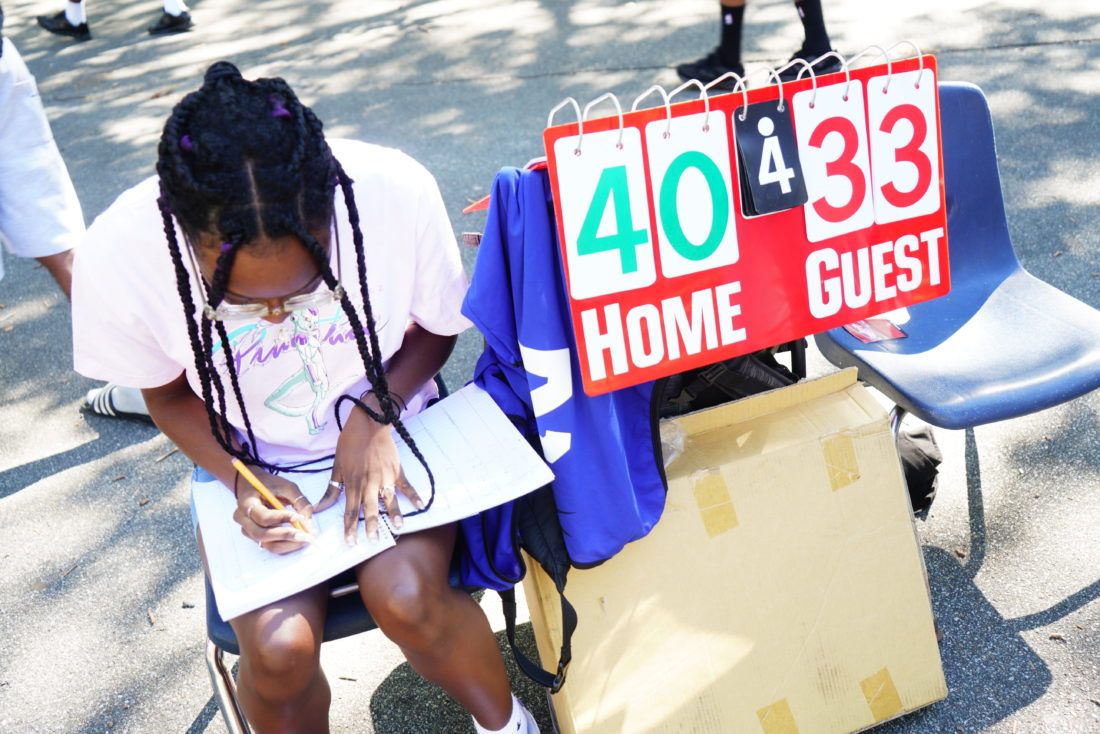
“The Community Board [3] stood against it, the Restoration [Plaza] stood against it, and the BID stood against it.”
While the board understood the poignancy of putting the mural there, Antoine said, they were reluctant to hand it over for programming.
“That block is also very important to them as far as traffic flow and access to different things,” Antoine explained. “So they definitely didn’t want the street closed.”
They suggested that she put the programming in another spot; she held firm.
“No,” Antoine recalled telling the board. “This is the street that we need, right here. This is the street where you wrote ‘Black Lives Matter.’ We have Restoration [Plaza], we have Marcy Plaza, and we want everyone to feel comfortable. Don’t give us one of these streets where you know there’s a lot of gun violence or gang warfare.”
If the board moved programming to another street, Antoine said, “It would not have been the Bed-Stuy mural. I think it would have been like ‘the Black people’s space.’”
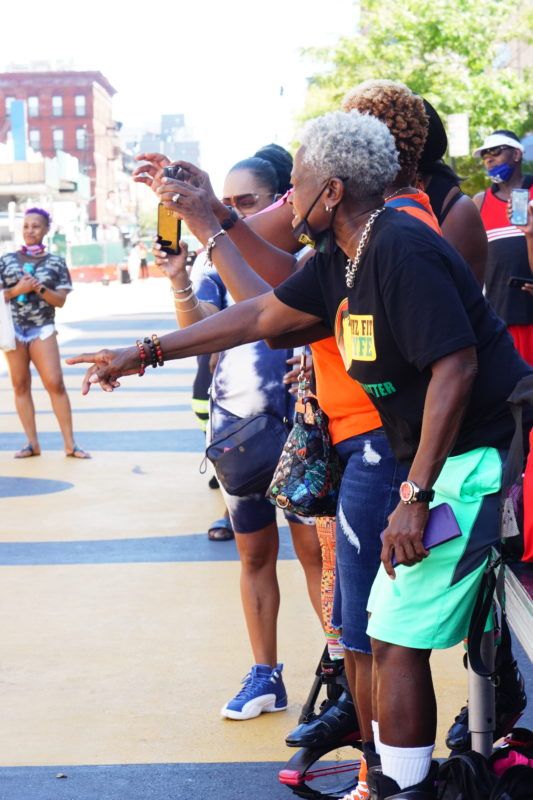
Ty West, a designer and animator for Mustache and the director of the documentary, agreed with Antoine.
“I think one of the reasons why the mural was a success was because it was on this main street,” West told Bklyner. “If you were walking or coming from the train, you would see and hear the noise. And there was music happening, there were a lot of events. I think that was one of the main reasons that it really garnered all this support. You can’t deny the numbers; you can’t deny the people that are out there on Saturdays.”
West, who lived directly over the mural when it was first being painted, was walking home when he first saw it.
“Over the couple days that I was watching and mesmerized with what was happening, I found myself wanting to get involved,” he said.
The film’s main operative was, he explained, to keep the moment from being forgotten after the programming ended – as well as to showcase the work of Antoine and the other organizers.
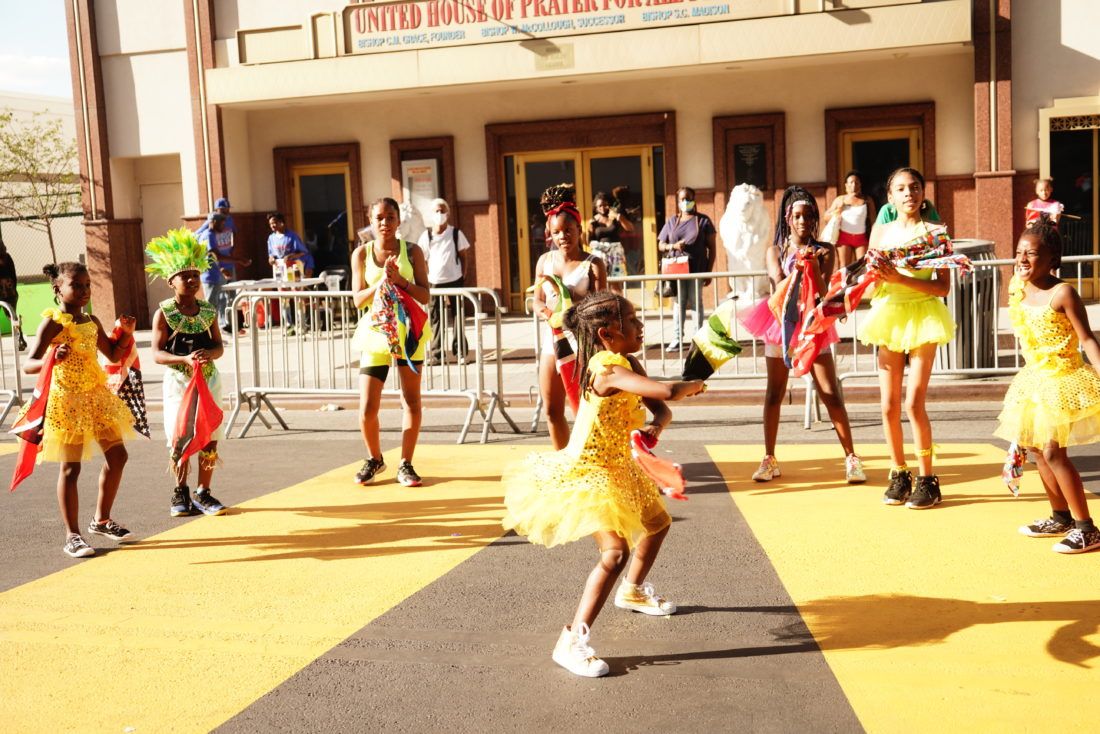
“’Is this telling the story of the mural and the work that [Monique and the Collective] did properly?’ That was our goal,” said West. “As I was going through the footage, it was such an uplifting and spirited event – I wanted to make sure that the message is coming across. And from all the conversations I had with Monique, with Dawud and with Brittany [Micek] – it was all about empowerment and uplifting the community. So I wanted that to come through, and I think it did.”
Antoine agreed.
“It’s a wonderful, wonderful project,” she told West during a Zoom call with Bklyner. “You couldn’t have done a better job.”
While the mural was opened back up to traffic in October, Antoine hopes to restart programming sometime during the warmer months. To make clear the need for continued funding and support for the project, Antoine contributed the following statement:
“The only way this project can be successful is with support from the City, our elected officials, and philanthropic sources.”




